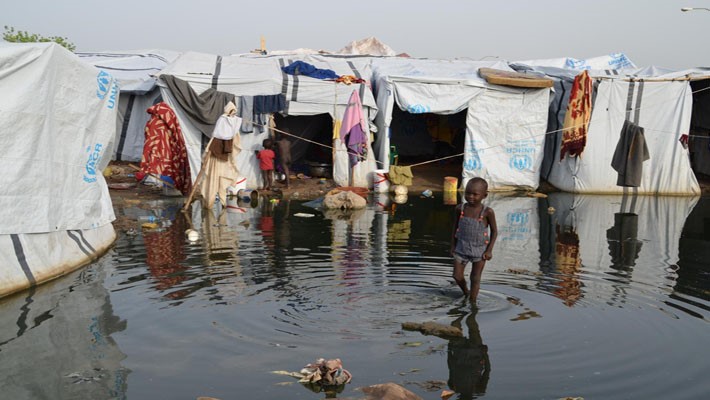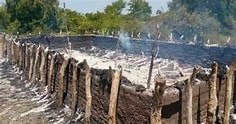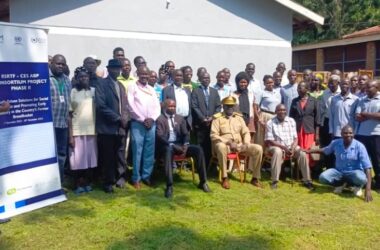By Kei Emmanuel Duku
An estimated 710,000 South Sudanese and refugees who fled the conflict in Sudan, are in urgent need of humanitarian assistance.
According to United Nations Office for the Coordination of Humanitarian Affairs (OCHA) report, homes of the affected, were destroyed by floods.
The report reveals that 30 out of the 78 Counties across the country including the Abyei Administrative Area are currently experiencing severe flooding.
Homes, crops, and critical infrastructure have been destroyed, education, road networks, and health services disrupted.
The risk of disease outbreaks are high since its onset in May, this year.
It also noted that the situation has been made worse due to the ever-declining economic situation, continued conflict, disease outbreak, and current conflict in Sudan.
The highest number of people affected by the floods are from Jonglei, Unity, and Warrap states.
It is estimated that over 15,000 people have been displaced in Fangak and 3,600 flood-affected individuals from Fangak County of Jonglei State have already sought refuge in neighboring Tonga, Panyikang County of Upper Nile State.
OCHA stated that some of the population who have already relocated to highland areas in Upper Nile state are lacking medical care, protection services, shelter, and non-food items.
Whereas in Unity State, there is fear of disease outbreaks caused by open defecation and stagnant water accumulation after flood has caused extensive damage to shelters, infrastructure, and critical services.
Already 9 out of 13 counties in Unity State have been affected by flood with the majority of the population from Mayom County expected to locate to a safer area and leave their livestock behind.
Meanwhile, an assessment conducted between the 27th and 29th of August in Poachalla County, Greater Pabior Administrative found that 3,500 population have been affected by floods in Otallo, Akoy, Adong, and Akiela Payam with the majority of the affected population facing a shortage of food, non-food items, health kits protection services among others.
The recent flood experienced in Upper Nile State has also contributed to the destruction of dykes, people’s houses, and farmland consequentially affecting 24,000 in Maiwut Centre, Pagak, and Jekow Payam of Maiwut County who are currently in dire need of shelter
In another separate flood that took place in Northern Bahr el Ghazal over 198,000 people in five different Counties have been affected in the last two weeks and about 50,000 of them now have relocated to the highland areas.
In Aweil East and West County, the situation is expected to get worse as more rainfall is expected to take place in the coming days.
The floods in Northern Bahr el Ghazal are said to have destroyed infrastructure and affected 70,000 civilians.
As the floods continue to ravage the country, the road network in Southern Abey, Abyei Administrative has been destroyed by the floods hindering the effective delivery of humanitarian assistance to the affected population.
The Office of the Humanitarian Assistance Coordination has reported that two trucks loaded with 5 metric tons of essential medical supplies destined for Abyei Hospital from Wau got stacks for days worsening the health situation of the affected population in the Abyei Administrative area.
In the Equatorial region, over 18,000 people have been affected by flood in the four Payams of Lafon County in Eastern Equatorial State whereas 8,500 in Terekeka County of Central Equatorial State have been affected.
Additionally in the Eastern Equatorial State so far 7 health centers have been closed due to the flooding and 8 schools have already been damaged preventing children from accessing education.
About 113 acres of farmland in Terekeka County have been destroyed because of the flood while schools in the area remain closed.
OCHA said to be able to serve the lives of the affected population there is a need for coordinated action to address the escalating disaster.




